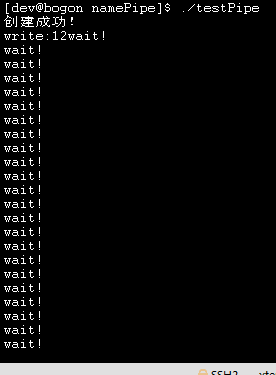Linux:进程间通信——命名管道
进程间通信——命名管道
- 命名管道
-
- 命名管道的创建
-
- 命令创建
- 函数创建
- 特性
命名管道
和匿名管道一样,命名管道也是在内核中开辟的一段缓存区,不过和匿名管道不同的是,这段缓存区是有标识符的,这也就意味着不同的进程,不需要有亲缘关系,只需要通过标识符就能找到该缓冲区了。
命名管道的创建
命令创建
命名管道可以从命令行上创建,命令行创建是使用下面这个命令:
mkfifo filename

"p"代表文件类型为管道文件
注意:该文件是不支持直接写的,该文件的作用是通过它我们可以找到内核中的创建的缓冲区
函数创建
相关函数:
mkfifo函数:
函数原型:
#include 代码:
#include 运行结果:

一个完整的例子:
这个例子在namePipe.c中先向缓冲区中写入了hello linux!然后再read.c中读出所写的内容。
namePipe.c
#include read.c
#include namePipe.c的运行结果:

另一个终端中read.c的运行结果:
![]()
特性
(1) 生命周期跟随进程
(2) 命名管道具有表示符
(3) 其它特性和匿名管道一样